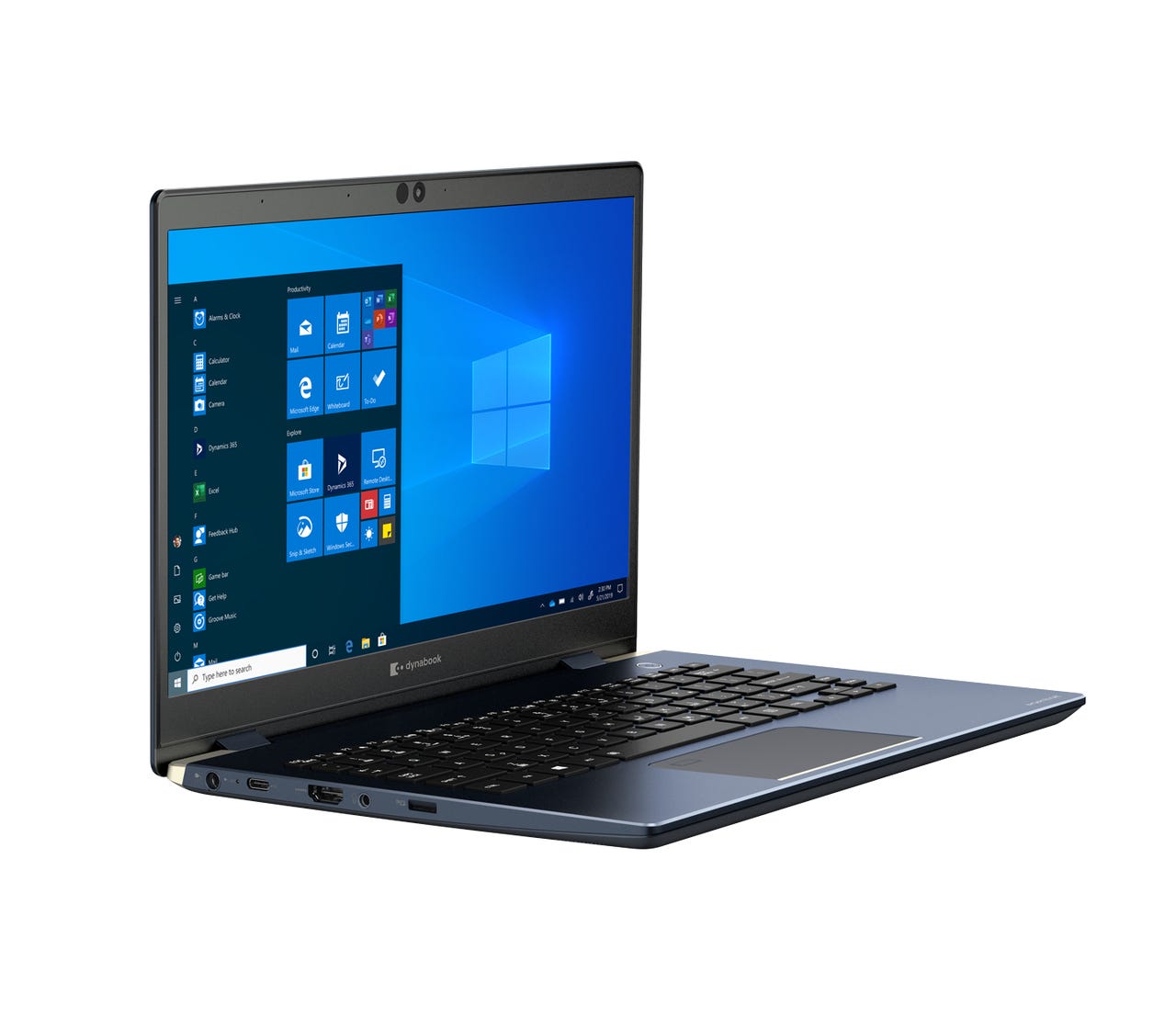Dynabook launches mid-tier laptops, rounds out its portfolio

Dynabook, the B2B laptop maker formerly known as Toshiba, is building out its presence and brand at CES 2020 a year after formally splitting from its former parent.
The brand, used in Japan since 1989, became the name of the former Toshiba laptop business. In 2018, Toshiba sold its PC business to Sharp. Dynabook America was created in April.
Now Dynabook is slowly making its branding turn. When the Toshiba-Sharp deal closed last year, there was barely enough time to change the Dynabook signage at CES 2019 and was part of the Sharp booth. Indeed, a tester Portege x13, a blue magnesium premium lightweight laptop, came with Toshiba-branded quick start guides.
The Portege x30 is fun to carry around, has premium features and is a contender vs. Dragonfly even if it came out earlier. The biggest mental hurdle is viewing blue magnesium as a premium shell for a laptop. While the weight is great, blue magnesium does feel a bit plastic for a premium device.
Kelcey Kinjo, product manager for Dynabook Americas, said the company aims to be "purely a B2B player" and one targeting customers looking for "more of a quality build." Dynabook's customer base is 85% business customers and 15% education.
Dynabook orders are fulfilled via CDW and also sold on Amazon. "We still own our facilities, design and engineer our devices and own the whole process," said Kinjo. "We write our own BIOS too."
Dynabook is also rounding out its portfolio. Last year, Portege x30 was an entry that later was replicated by HP and its Dragonfly laptop. Blue magnesium is the big sell because it's durable and makes the laptop lighter.

Dynabook's Portege X30L
At CES 2020, Dynabook outlined the following:
- A new Portege x30 update that has a 13-inch screen with smaller bezels, a 6 core Intel processor and weighs 1.9 pounds. The Portege X30L is configurable up to 24GB of memory and TB of storage. Like its predecessor, the laptop has a wide selection of ports including Ethernet, HDMI, USB-C, headset jack and microSD slot.
- The launch of its A-series laptops, which are more midmarket workhorses, with 13-, 14- and 15-inch models. All have Intel's 10th generation Core processors.
- A single-cable USB-C and Thunderbolt 3 dock.
- And new +CARE standard warranty with four service options for support.
Specifically, Dynabook is launching the Tecra A50, a 15-inch laptop with an optical drive designed for enterprises. Pricing will be in the $899 range. The Tecra A30 is a version of the Portege X30 without some of the perks. There's also the Tecra A40, a 14-inch laptop. Dynabook is also rolling out the Portege X30L, the "L" is for light, and there's an Ethernet port added. The Portege X30L will launch in February with the other additions in production at the end of January.
Why an Ethernet port? Wi-Fi is spotty when traveling globally. Customers in Japan and Asia often prefer an Ethernet port for connectivity.
Dynabook's branding today revolves around Portege for lightweight devices with screen sizes below 14 inches. Tecra is the larger size laptop brand.
Kinjo noted that Dynabook will start aligning the Tecra and Portege brands to revolve more midmarket and premium, respectively.
Battling giants
Dynabook's B2B focus won't insulate it from fierce competition. While the laptop line is solid with the addition of midmarket devices, Dynabook has to battle with Lenovo, HP and Dell.
To combat giants, Dynabook is leveraging its channel, global scale and a warranty that covers 3 years and 4 years on build to order devices.
However, HP is pushing hard into devices as a service. Dell is using its support and service knowhow to add Chromebooks into the fold along with Windows. Lenovo is also a major enterprise player. In addition, those larger competitors also offer a broader selection as well as processor options with AMD as well as Intel.
Dynabook has the focus with B2B, but will have to expand its footprint in the enterprise. However, Dynabook has an opportunity to cater to smaller companies.
There's also something to be said for the premium end of the market. Dynabook Portege x30 is a strong contender. ZDNet's Sandra Vogel had concerns about the durability of the Portege x30's chassis, but also said that the laptop is a traveler's dream.
I agree with the lightweight part of the equation and wasn't as concerned about the durability with the Portege x30. Kinjo did note that the Portege x30 and Dynabook's laptops stood up to military drop testing and specifications.